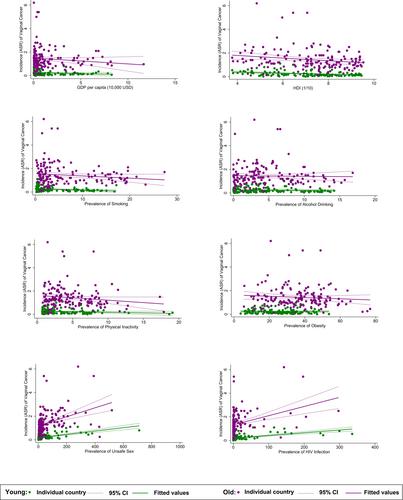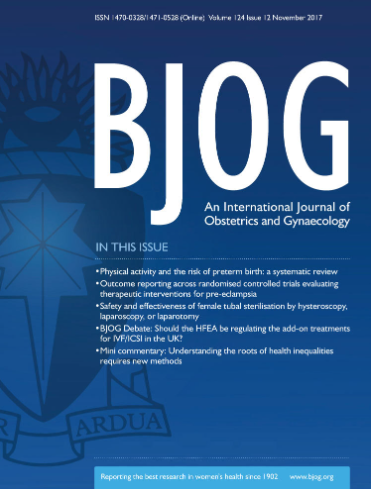Incidence distributions, risk factors and trends of vaginal cancer: A global population-based study
Abstract
Objective
This study aimed to investigate the incidence, risk factors and trends for vaginal cancer.
Design
Retrospective observational design.
Setting
Data were collected from multiple sources, including the Global Cancer Observatory, Cancer Incidence in Five Continents Plus, Global Burden of Disease, World Bank and the United Nations.
Population
Individuals diagnosed with vaginal cancer.
Methods
The study collected data on vaginal cancer from the specified sources. The age-standardised rate (ASR) of vaginal cancer was calculated for different regions and age groups. Multivariable and univariable linear regression analyses were performed to examine the associations between risk factors and the incidence of vaginal cancer. Trend analysis was conducted using joinpoint regression analysis, and the average annual percentage change (AAPC) was calculated to quantify the temporal trend.
Main Outcome Measures
The main outcome measures of the study were the incidence of vaginal cancer, risk factors associated with the disease and the trend of its incidence over time.
Results
There were 17 908 newly reported cases of vaginal cancer (ASR = 0.36, 95% CI 0.30–0.44) in 2020, with the highest ASRs reported in South–Central Asia and Southern Africa. Risk factors associated with a higher incidence of vaginal cancer included a higher prevalence of unsafe sex and human immunodeficiency virus (HIV) infection. The temporal trend showed an overall rising incidence globally, with Iceland (AAPC = 29.56, 95% CI 12.12–49.71), Chile (AAPC = 22.83, 95% CI 13.20–33.27), Bahrain (AAPC = 22.05, 95% CI 10.83–34.40) and the UK (AAPC = 1.40, 95% CI 0.41–2.39) demonstrating the most significant rising trends.
Conclusions
The significant regional disparities and risk factors associated with vaginal cancer underscore the necessity for targeted interventions and education, particularly in regions with a lower human development index (HDI) and a higher prevalence of human papillomavirus (HPV) infection. The increasing incidence trend emphasises the need for enhanced HPV vaccination rates to prevent the development of vaginal cancer.


 求助内容:
求助内容: 应助结果提醒方式:
应助结果提醒方式:


